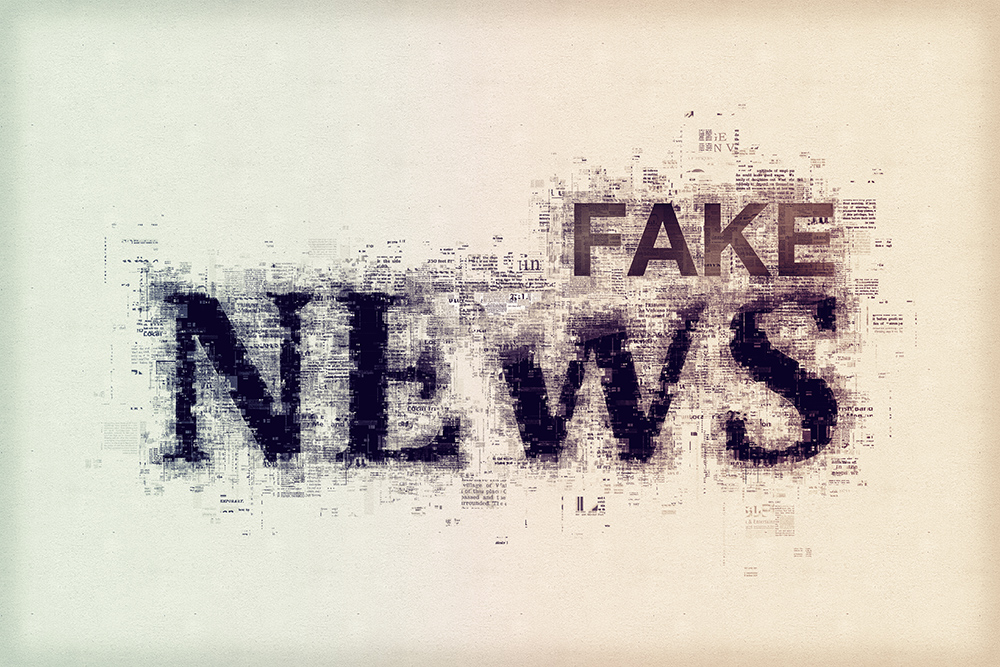10 Fake News Tactics
Fake news used to be a twist of truth, a spin on a story, and an outlandish opinion, but now it’s become an in-your-face blatant lie, and they downright don’t give a damn that you know they are lying. Now more than ever it is critical that people learn how to quickly sift through the garbage news and be able to discern and compartmentalize truth from fiction and plausibility.
Corey’s Digs provides over 80 resources for fact checking and deep digging, a file drawer loaded up with declassified documents and transcripts, tools including an excellent background search database, secure virtual private network when surfing the internet, and encrypted emails, as well as a two-part series on Hunting the Hunters providing tips on researching. Take advantage of this site and use all of these tools to keep yourself sharp during this information war, as they try to erase our history.
10 Fake News Tactics
1) They write an article purely about data, throw out large numbers to scare you, but won’t give you the minuscule percentage it equates to because they know most people won’t bother to do the math. So instead, all people see is that big number. Then, they take an aspect within the overall data topic, that equates to a much larger percentage, and push that to the forefront to stoke fear, so it’s the only percentage that sticks in ones mind. This is commonplace in fake news. Do the math yourself.
2) They write some dramatic piece to justify their narrative, throwing out numbers and percentages, then create a graph to reflect just how awful it appears to be. The only problem is, they only factored in about 2 out of 10 elements that would need to be taken into account to derive at the numbers they came to. They tell less than half the story, sum it up with a shocking visual, and people fall for it. Another thing they do with numbers is push a scare tactic with a global death rate attached to a year, but don’t mention it’s global, leading people to believe that is the death rate in the U.S. alone. They do this with the vaccine industry all the time. “Over 110,000 people died from the measles in 2017,” with a big fat zero in the U.S., but they fail to mention that part.
3) They scribble out a 2,000 word spin on a story, beginning with an intriguing detail and perhaps a fact or two. Once they grip your mind, they go in for the kill – filling it with a pumped up opinion made to look like facts, while not providing a shred of evidence. About 3/4 of the way down the article, they lay out that basically everything they just stated was bs, in one single sentence, that about 5% of people will ever reach.
4) The emotionally driven articles meant to fuel anger, hate, or fear, that are typically backed with a bunch of false or exaggerated statistics, piped full of bought-off scientific research, or a personal story from a paid actor.
5) “Our sources say” is no longer a good look. Nine times out of ten it’s either intentional leaked disinformation, someone with a grudge, or the sources are non-existent. Stick with journalists who provide evidence, unless you have followed a journalist’s track record long enough to know that if they occasionally have an anonymous “source” and you are able to connect additional dots with evidence, keep it in the plausibility compartment until more information comes out.
6) Every single fact checking website out there is a joke. They are wrong more than they are right – and that’s most certainly intentional.
7) The “drop retraction” and “the extraction.” The “drop retraction” is the intentional drop of something so outlandish it becomes instant clickbait for a viral storm. They know it’s an out and out lie, and they have every intention of doing the most damage followed by the most minimal retraction within 24-hrs of it going viral – just long enough to seed millions of minds, knowing full well that the mere tweet apology rather than removal of the piece or tweet entirely, will always remain in the clickbait spotlight. The “extraction” is when they extract a single sentence from a lengthy document few people will ever read, or 10 seconds from a 5 minute video clip few will bother to trace down, and spin it into a volatile mudslide of such disbelief, that everyone believes it. These are almost always emotionally driven segments.
8) They stick with the same story or same statistics they’ve been pushing for a long time, even long after it’s already been debunked with evidence to the contrary. There are millions of people in this world, so they cast their spells in cycles knowing full well it will grab hold of some minds.
9) “Misleading headlines” are some of the most infuriating ones of all. We are in a world of sound bites and eye candy, with information storming at 1000 mph and people with shorter attention spans than ever before. People will take a headline at face value, never read the article in its entirety, then proceed to share it with an opinion stapled to it. How can one have an opinion on something they never read? This is dangerous territory creating a lot of cognitive dissonance. CBS News recently ran a perfect example of this, with a prominent race baiting headline stating, “A white bar owner in Omaha shot and killed a black protester. He won’t face charges.” If anyone cared to click on it to read the actual story, the reality was it was a man battling another man who was shot in self defense, but they had to make it about race to stoke the racial divide and chaos. The New York Times is famous for altering headlines from their morning edition to their late edition. It generally begins with a shred of truth, and after receiving orders from the narrative machines, the headlines change to a totally different tone, expressing the complete opposite of how it was portrayed in the first edition.
10) The “two-sided dagger.” When they write from a place of concern about a group of people, person, or situation, only later to stab them in the back for whatever political agenda they are taking part of at that point in time. Alternatively, they write in a certain tone about one situation or event, while writing in a completely different tone about an almost identical situation or event. In either case, the two-side dagger becomes a nice side-by-side visual for evidence, but the damage has already been done.

Some perfect examples of fake news and manipulation tactics can be seen all throughout Corey’s Digs recent report: Historical Hypocrisy & Psychological Warfare which covers the past month of devastating actions and some of the most outrageous hypocrisy we’ve witnessed to date in an 111-page pictorial book with hyperlinks. It is also available in PDF download in The Bookshop. It’s a historical scrapbook of evidence. Hang onto it.












6 Comments
12bytes
nice piece – this dovetails well with recent work by Corbett, “Who Will Fact Check the Fact Checkers?” and “Fact Check: Polio Vaccines, Tetanus Vaccines, and the Gates Foundation : The Corbett Report” – two really good videos
i also keep a list of sites i believe to be generally trustworthy on my site (12bytes.org) if anyone is interested and it includes Corbett, Whitney Webb, Derek Broze, Global Research, MintPress News, etc… i would welcome any feedback/suggestion
“Every single fact checking website out there is a joke. They are wrong more than they are right – and that’s most certainly intentional.”
i totally agree and it’s easy to see when you look at who’s running them and where the money comes from – i would also add to that Wikipedia which is a piss-poor resource for anything political or contravercial
thank you Cory
Christopher
Nailed It!
TruthJunkie
Outstanding Corey. I‘ll share the link to this article with my family and friends. Some have a hard time deciphering fact from fiction. I‘ve gotten into some heated discussions and chosen to gracefully hold my tongue to keep the peace.
Corey Lynn
Excellent! Be sure to share this one with them too. They mind this helpful as well. https://www.coreysdigs.com/learn-how-to/confused-how-to-compartmentalize-fact-from-fiction-and-plausibility/
PAUL
This article tells you everything you need to know. But it is bone chilling to realise that there are large numbers of not entirely stupid people, who actually believe it.
Maryl Hanson
As always very informative…
Waking America and others up one
At a time…